Llandaff Cathedral: The creation, destruction and re-buidling of a monumental, expected and unforgettable building
John Goodall looks at the remarkable history of the 900-year-old Llandaff Cathedral, from its early beginnings to the trailblazing post-Second World War restoration. Photographs taken by Paul Highnam for the Country Life Picture Library.

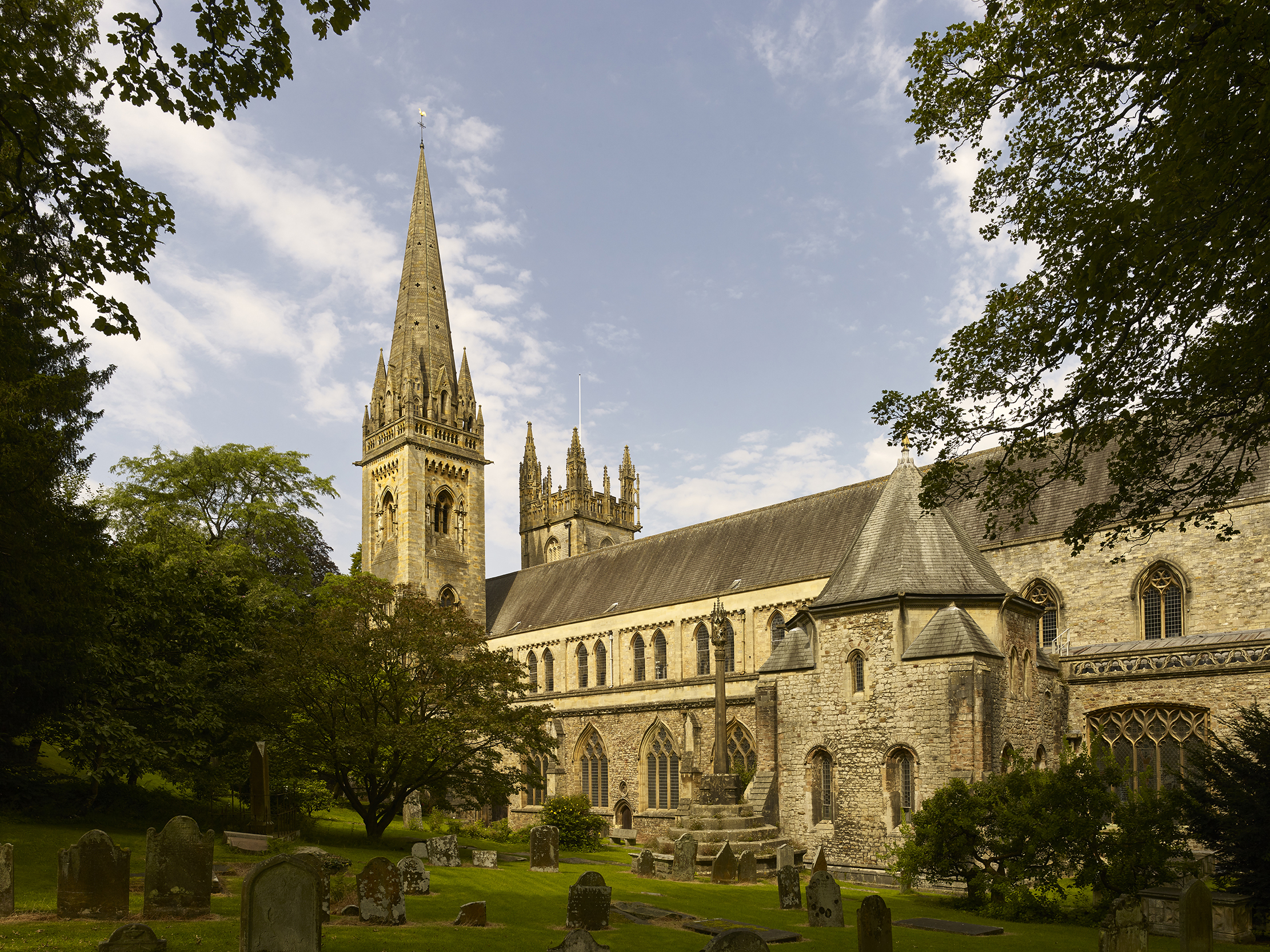
At about 6.30pm on January 2, 1941, air-raid sirens heralded the first major bombing raid on Cardiff during the Second World War. It was a cold night lit by a brilliant moon with snow on the ground. On the outskirts of the city, in Llandaff, the dean and verger of the cathedral hurried to take up their posts in the church. Unable to find his tin hat, the dean put a colander on his head.
During the attack, a landmine suspended from a parachute — clearly visible to several onlookers — drifted down and snagged on the cathedral spire. It then fell into the graveyard on the south side of the nave and exploded with tremendous force.
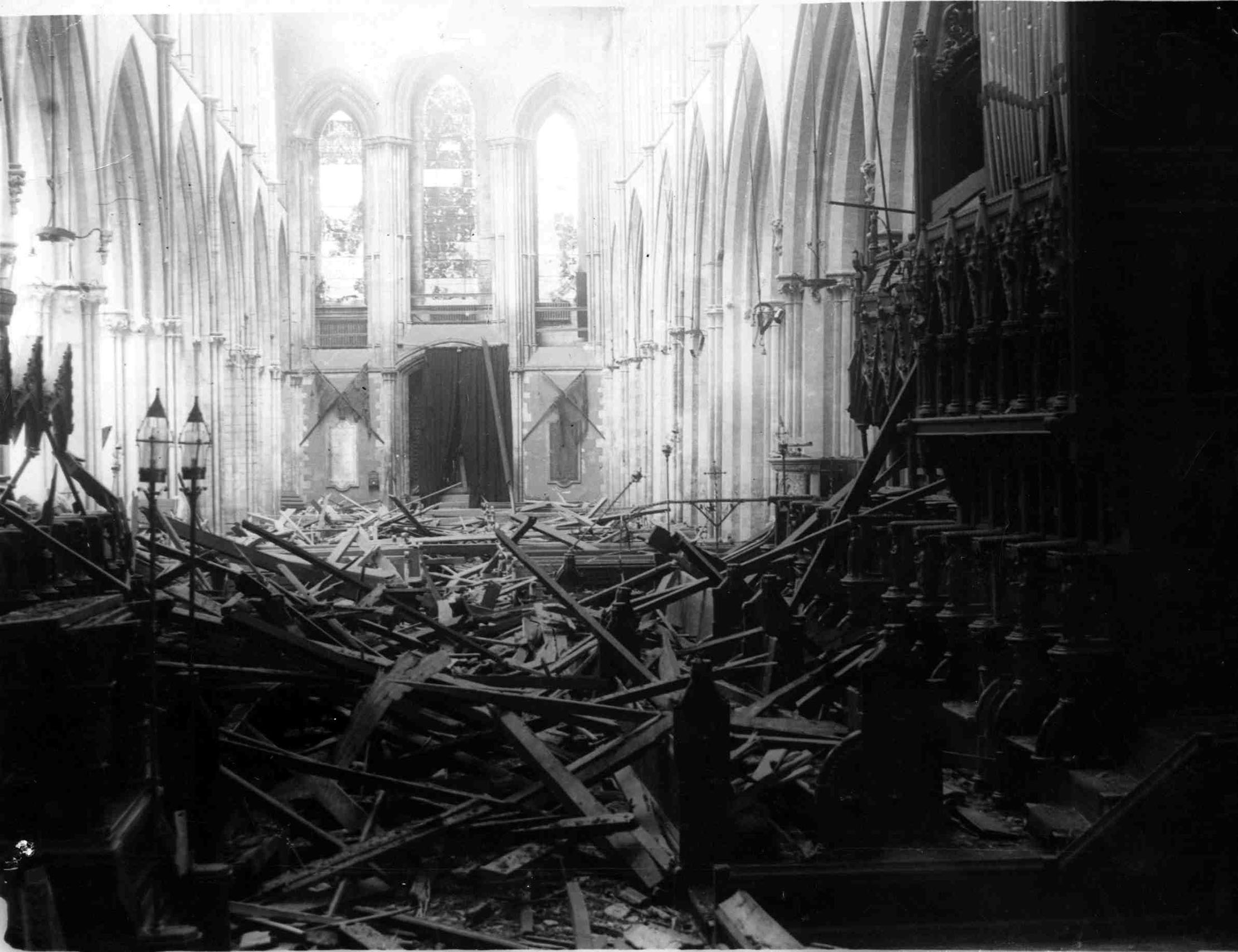
Windows were blown out, much of the nave roof was torn off and many of the internal furnishings were smashed. Gravestones were flung into the air and rained down on surrounding houses. Buried beneath the debris, dean and verger were lucky to escape alive.
Next morning, the full scale of the cathedral’s devastation became apparent. Some wept at the sight. As the clear-up began, the snagged parachute was removed from the destabilised spire — a fragment of it still survives in the cathedral archive.
It’s impossible to understand Llandaff Cathedral today without appreciating the devastation it suffered in the 1940s. The major programme of restoration launched thereafter, constituted no less than the third reimagining of this remarkable building since the Reformation.
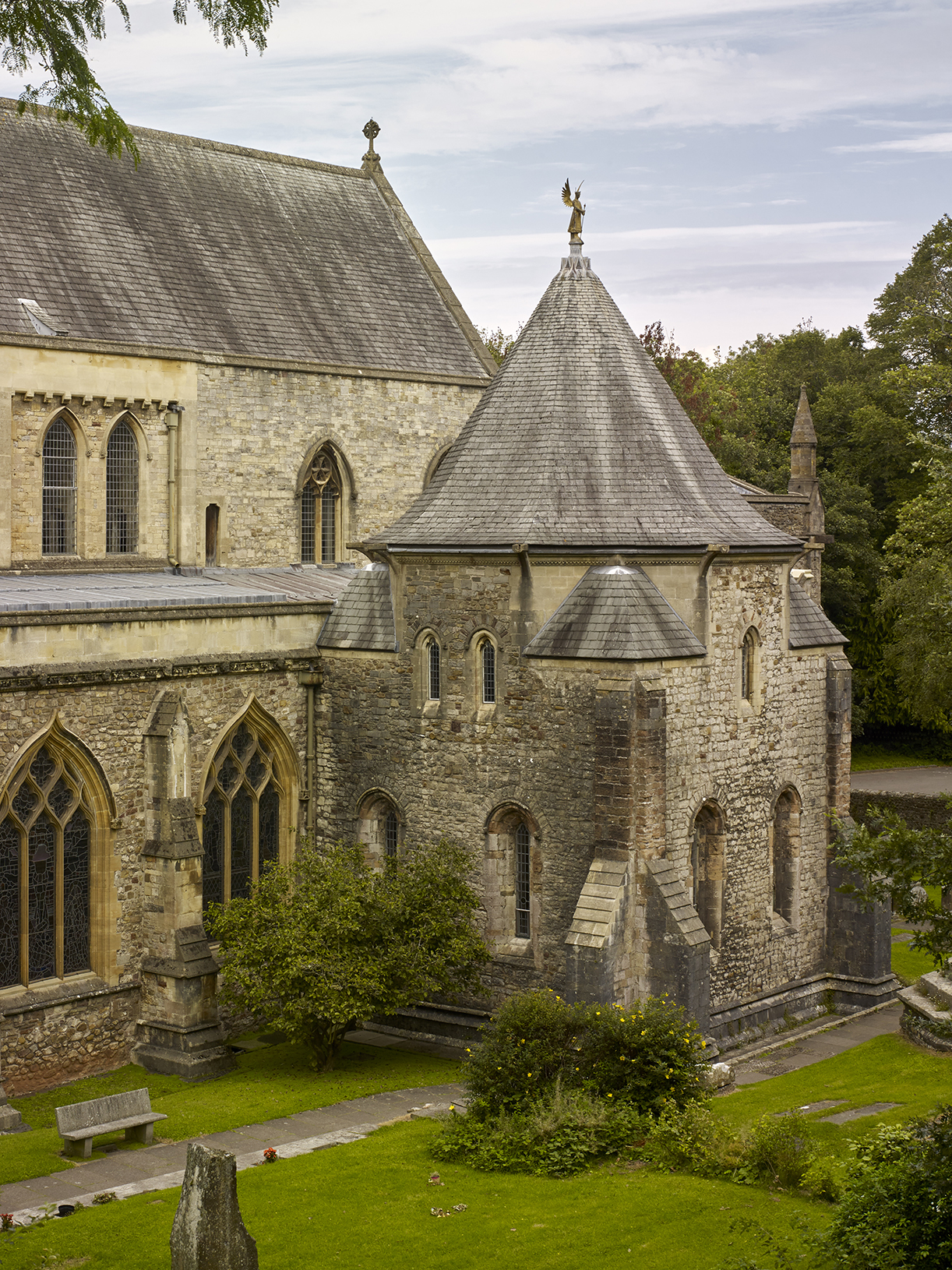
The cathedral stands on the west bank of the Taff close to the head of the river’s tidal waters and at a probable intersection of Roman roads. It occupies the bottom of a deep and narrow dell, a distinctive situation of many early ecclesiastical sites in Wales, including St David’s Cathedral and Llancarfan. As a result, the visitor approaches it dramatically from above, descending from the green of the village — technically a city — past the ruins of a medieval belfry tower.
The 12th-century Book of Llandaff attributes the foundation of the see of Llandaff to one St Dyfrig or Dubricius in the late 5th or early 6th century. It’s hard to verify the assertion and — not exclusive of this claim — it could be that the early bishops of Glamorgan were concurrently and sequentially associated with different religious sites in the region. What is clear, however, is that the diocese of Llandaff was constituted in its late-medieval form by the early 12th century. In institutional terms, it was a secular cathedral, served by a community of canons, rather than a monastic foundation.
Exquisite houses, the beauty of Nature, and how to get the most from your life, straight to your inbox.
The crucial figure in this process was the first Norman-appointed bishop, Urban (or Gwrgan), who ruled 1107–34. He was a Welshman, possibly from the family of the hereditary priests of Llancarfan, and a priest of Worcester. He inherited a church here dedicated to St Euddogwy that is described in The Book of Llandaff as ‘but 28 feet in length, 15 wide and 20 high, with two aisles on either side of but a small size and height, and with a porch 12 feet long’ and it terminated in a semicircle or apse. It is presumed this building stood below the present church, but no trace of it has ever been identified.
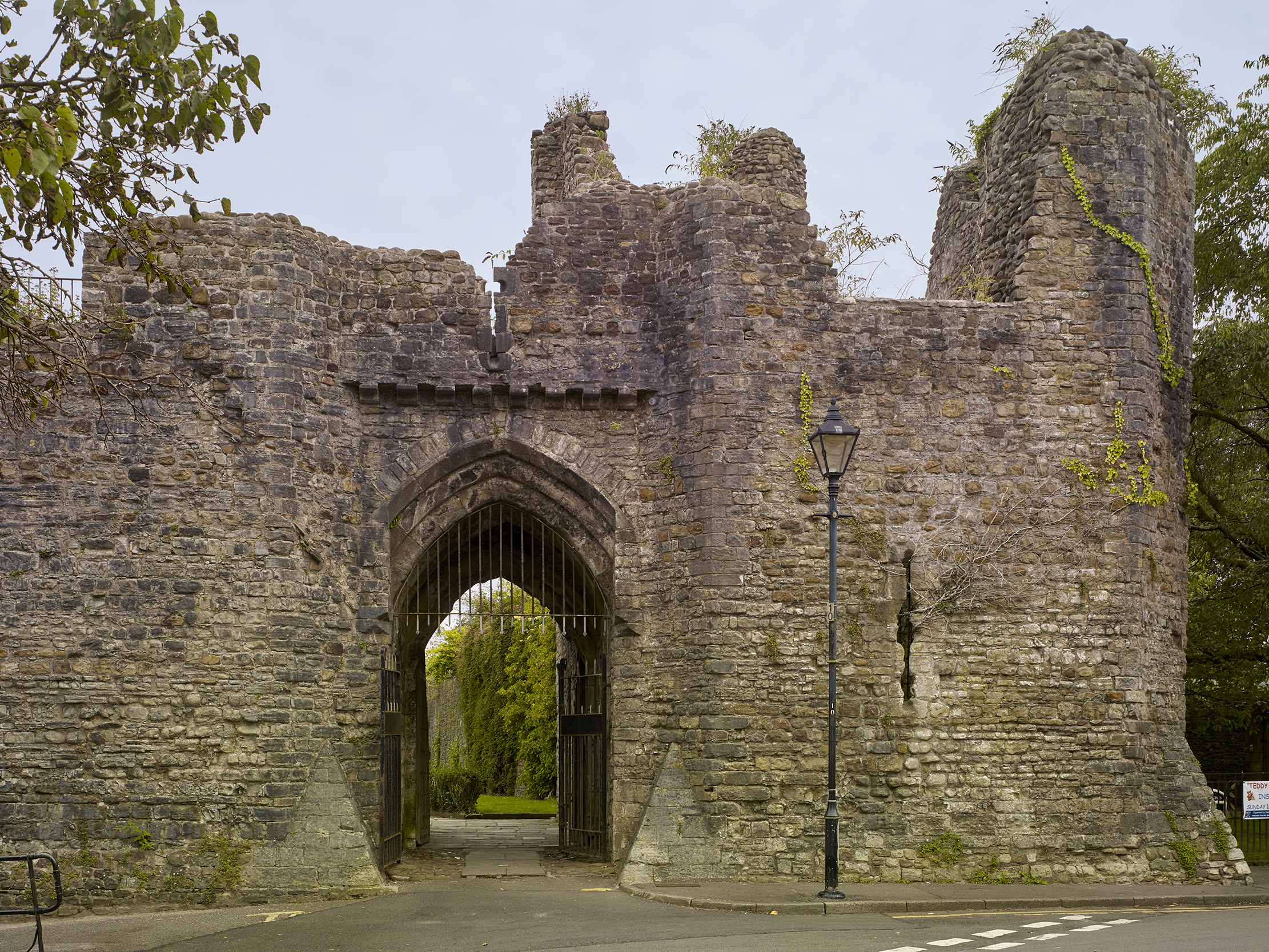
Exactly 900 years ago, by April 1120, as an assertion of the dignity of his see, Urban began an ambitious new cathedral church here. It was conceived on a scale unprecedented in south-east Wales, inspired by such major Romanesque churches on the Welsh borders as Hereford Cathedral and St John’s, Chester. He also pointedly extended the dedication to include St Peter — a reference to the European church — as well as St Dyfrig (whose relics he acquired), thereby making a predatory claim to authority over churches associated with the saint in Herefordshire.
The remains of Urban’s church are fossilised within the present cathedral. It was constructed from cut stone and lavishly decorated with sculpture. The liturgical choir was laid out to a rectangular plan and comparative evidence suggests that it was flanked by short aisles (although it’s conceivable that it lacked them). Accessible through a monumental archway that survives behind the high altar was a projecting chapel that probably terminated in a semi-circular apse.
Urban died in 1134 and the work of completing the church evidently continued into the late 12th century. What form the nave originally took is not now clear. Again, it may not have possessed aisles. Whatever the case, there still survive from this period two magnificent Romanesque doorways that today serve as the north and south entrances to the nave. Might one of them have come from the original west front?
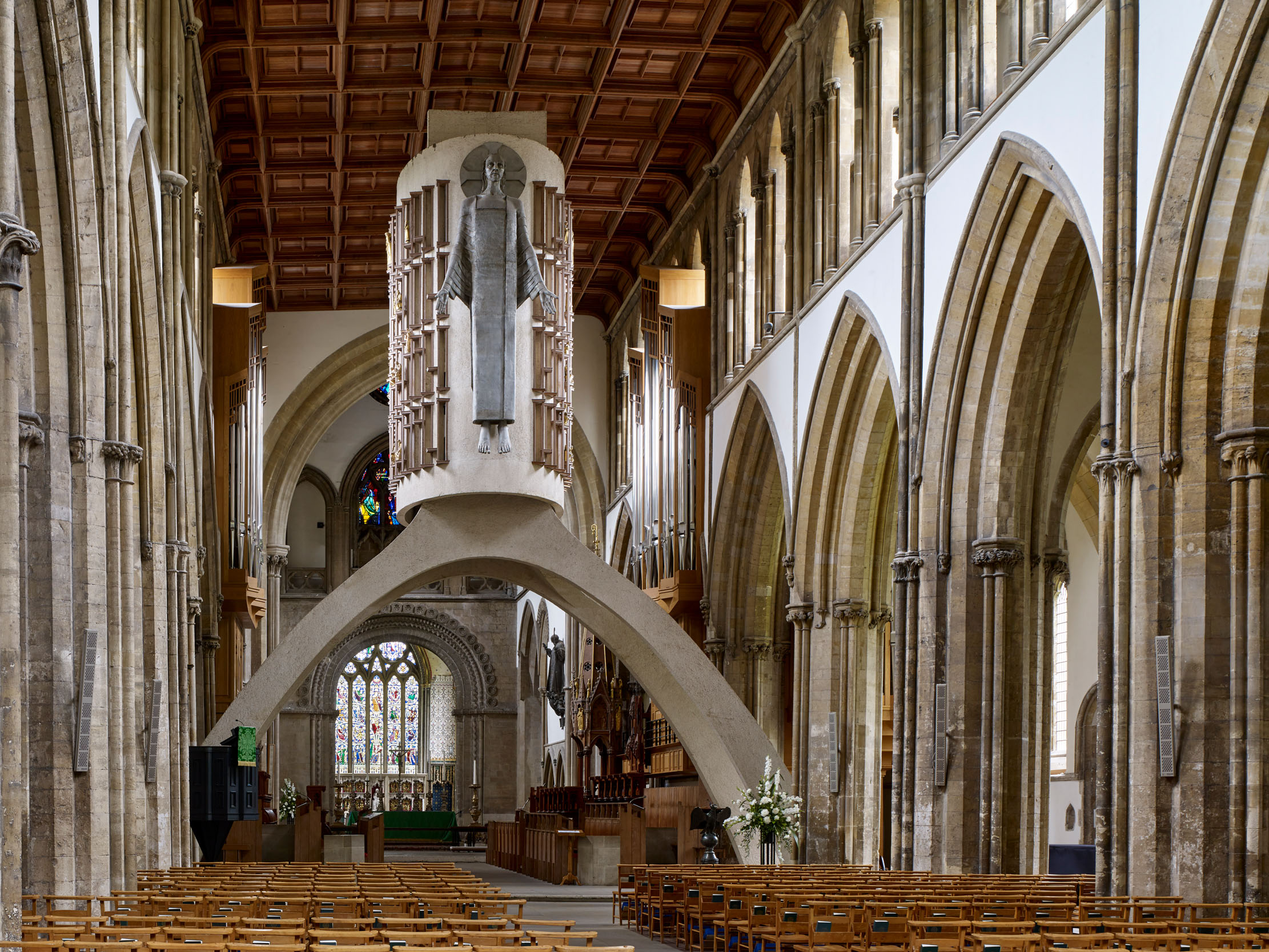
During the early 13th century, the Romanesque church was substantially enlarged. The nave was completely rebuilt as a two-storey structure with boldly detailed arcades opening into flanking aisles. There may have been an intention to vault the nave aisles, but it is a mark of the see’s relative poverty that a high vault — the sign of the most ambitious churches — was never intended. Likewise, the west front is magnificently detailed, but possesses only a single door, rather than the conventional triple entrance.
The treatment of the nave suggests that the mason who designed it was familiar with major buildings in the wider region of the Bristol Channel, including Wells, Glastonbury, Llanthony and, further afield, in Dublin. Throughout the Middle Ages, the importance of the Dundry quarries in Somerset to many major building projects and the relative ease of sea transport naturally enforced such architectural connections.
The nave aisles were later extended by stages to either side of the Romanesque choir, creating a long broad building without transepts or a crossing. To the south of the choir, a fine vaulted chapterhouse was erected that, from the exterior, resembles the base of a huge tower. The projecting chapel of the Romanesque church was also replaced in about 1300 with a vaulted Lady Chapel. This project was probably patronised by Bishop William de Braose (1266–87), a member of a powerful Marcher family.

Bishop de Braose is also credited with constructing a castle above the cathedral. Its surviving walls, towers and gatehouse bear technical comparison to work at nearby Caerphilly Castle, but it was not a popular residence for later bishops, many of whom resided instead at the episcopal seat at Mathern, near Chepstow. An unusual number of bishops before the Reformation were from religious orders.
Other late-medieval changes to the cathedral church included the re-fenestration of the aisles, the installation of a high altar reredos (once comparable, perhaps, to that at Llantwit Major, Glamorgan) and the erection of a number of fine funerary monuments. A tower was also added to the west front, reputedly paid for by Jasper Tudor in the late 15th century.
Llandaff survived the Reformation, but was much depleted by it financially. It is not clear whether any of its bishops in this period were resident (although a surprising number were Welsh-born) and, as early as 1575, one of them commented on the ‘ruinous’ state of the building. Two decades later, another described it as ‘more like a desolate and profane place than like a house of prayer’. At some stage by the late 17th century, the Lady Chapel had been separated off from the main building as a Welsh Chapel, with its own clergyman.
The Civil War and the subsequent suppression of the bishopric may have accelerated the decay of the building, but after the Restoration in 1660, the chapter was without the money to repair it. By 1692, the roofs were in a parlous state and, in 1718, it was suggested that the cathedral be transferred to Cardiff. There followed a dismal series of structural collapses in 1722–23, after which the main church was shut up and services were transferred to the Welsh Chapel.
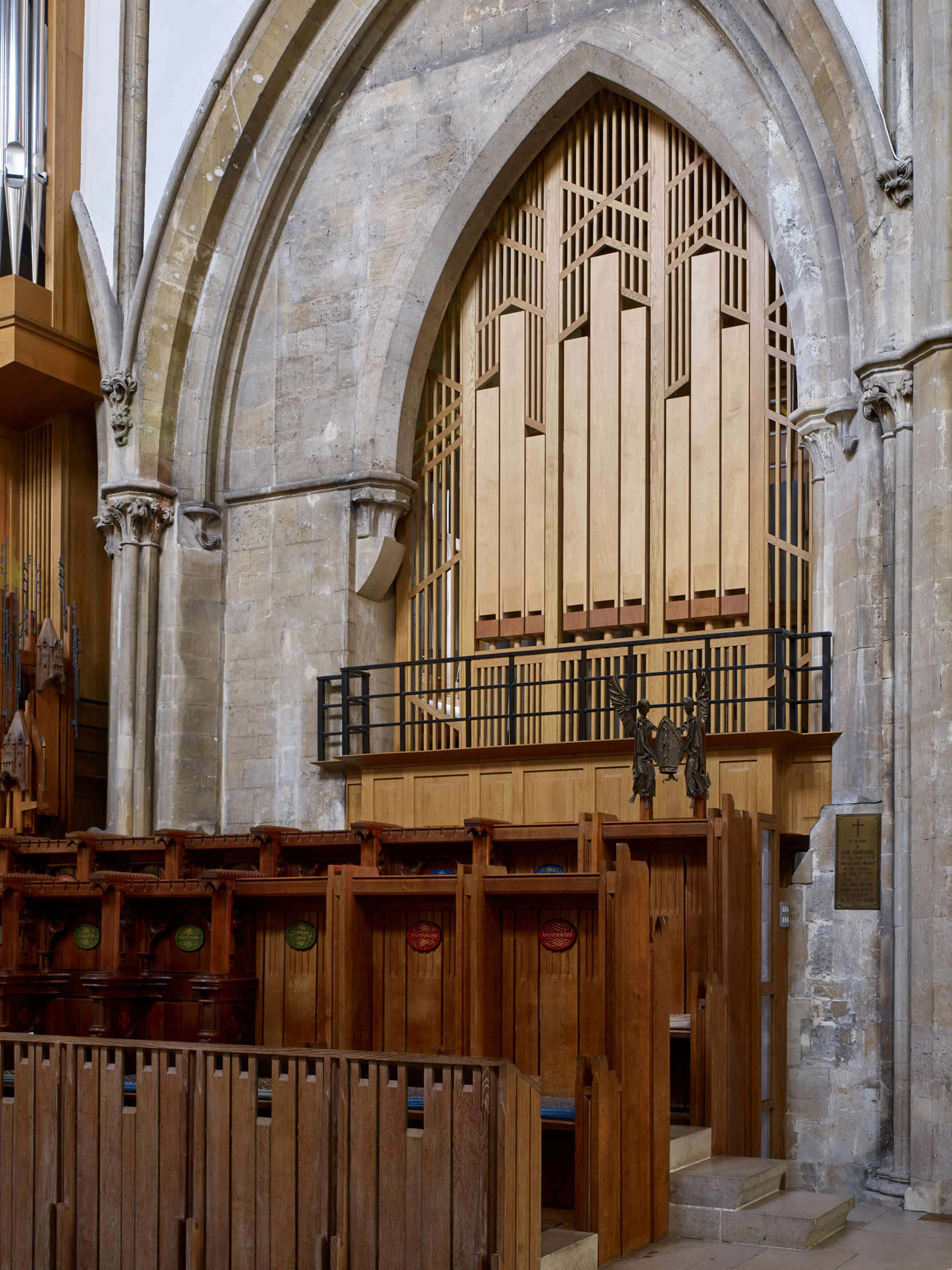
The solution to this neglect was radical. In 1730, John Wood the Elder of Bath, architect of much of that city’s elegant Georgian development, was commissioned to survey the building. Wood made the fantastical claim — published in The Origin of Building (1741) — that Llandaff was ‘beyond doubt the most ancient church in Britain’, its first fabric having been erected when temples ‘in the Roman taste’ were being converted into churches. In his belief, its development from 1120 had imposed the proportions of Noah’s Ark on a design initially derived from Solomon’s Temple.
Deliberately preserving the proportions of the choir, therefore, but overlaying all the later ‘licentious’ ornament, the fabric was recast as a temple. It may have been with reference to the 4th-century writings of Eusebius that the western end of the nave was left roofless as a cloistered atrium court to the building. Wood’s church was largely completed from 1734–37, but finally finished only in 1752. For all its interest, it found few admirers and was variously derided as ‘a medley of absurdities’ (1774); ‘ridiculously absurd’ (1783–84); a ‘ballroom’ (1787); ‘incongruous’ (1789); and a ‘pigeon-house’ (1794).
To 19th-century sensibilities, however, fired up by the Gothic Revival, Wood’s treatment of the ancient fabric was not simply ridiculous, it was actually intolerable.
The figure who set in train the process of re-Gothicising Llandaff in the 1840s was Rev William Bruce Knight. A Devon-born clergyman, he developed a passionate and scholarly interest in the Welsh language and became a widely respected administrator of the diocese. In 1843, he became the first Dean of Llandaff, following the creation of the office.
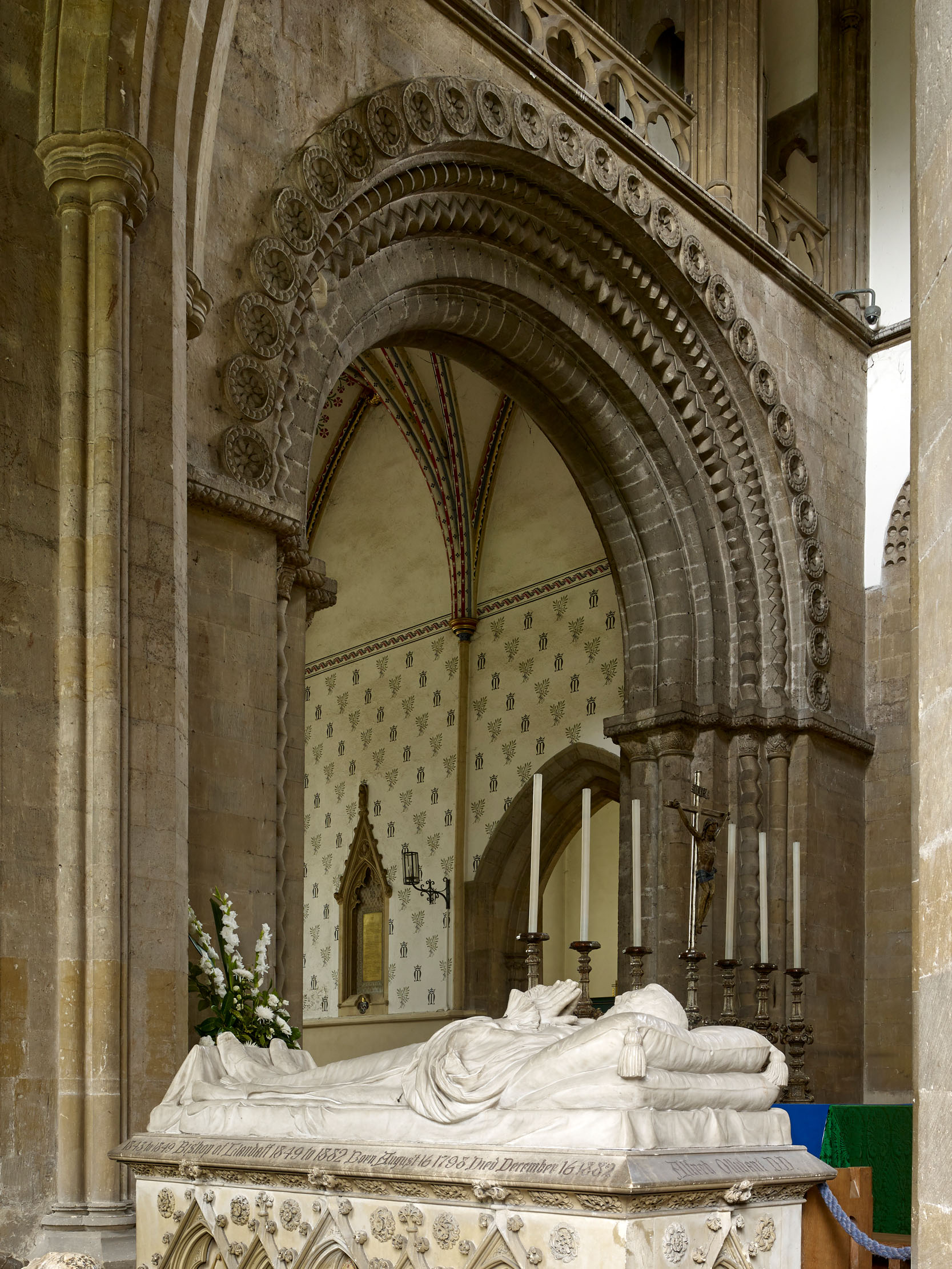
Knight initially proposed that the Lady Chapel be restored and must have appointed the young architect Thomas Henry Wyatt to the project. This commission was probably one of several Wyatt won in South Wales through the influence of his uncle, land agent to the Duke of Beaufort. The project grew rapidly in ambition and, on March 11, 1843, Bishop Coplestone wrote accusingly to his new Dean and friend: ‘I had some hesitation about subscribing to a Lady Chapel… As to restoring the cathedral, it would not be desirable if it were practicable… [Llandaff] is become a village.’
Nevertheless, the bishop gave the project £100 (as well as a generous bequest to the Lady Chapel scheme). By the end of the year, he had discussed a working method with Wyatt. ‘We should,’ the bishop wrote to Knight, ‘begin at the East End of the Choir—give that its proper character [Gothic] — then take in hand the side windows… and go on restoring these, two by two, westward — and in proportion to the money in hand.’ This was broadly the procedure that was actually adopted.
Wyatt remained nominally involved in the restoration until 1853, but control of it passed almost from the first to the diocesan surveyor, John Prichard, son of a long-standing member of the chapter. He worked from 1852 in partnership with London architect John Pollard Seddon, who introduced figures from the pre-Raphaelite circle. In 1857, the choir and four eastern bays of the nave were completed and the whole church was completed by the addition of Prichard’s magnificent south-west tower in 1867–69.
It was this splendid mid-Victorian church that was devastated by the landmine in 1941. The destruction prompted yet another brilliant reworking of this remarkable building.
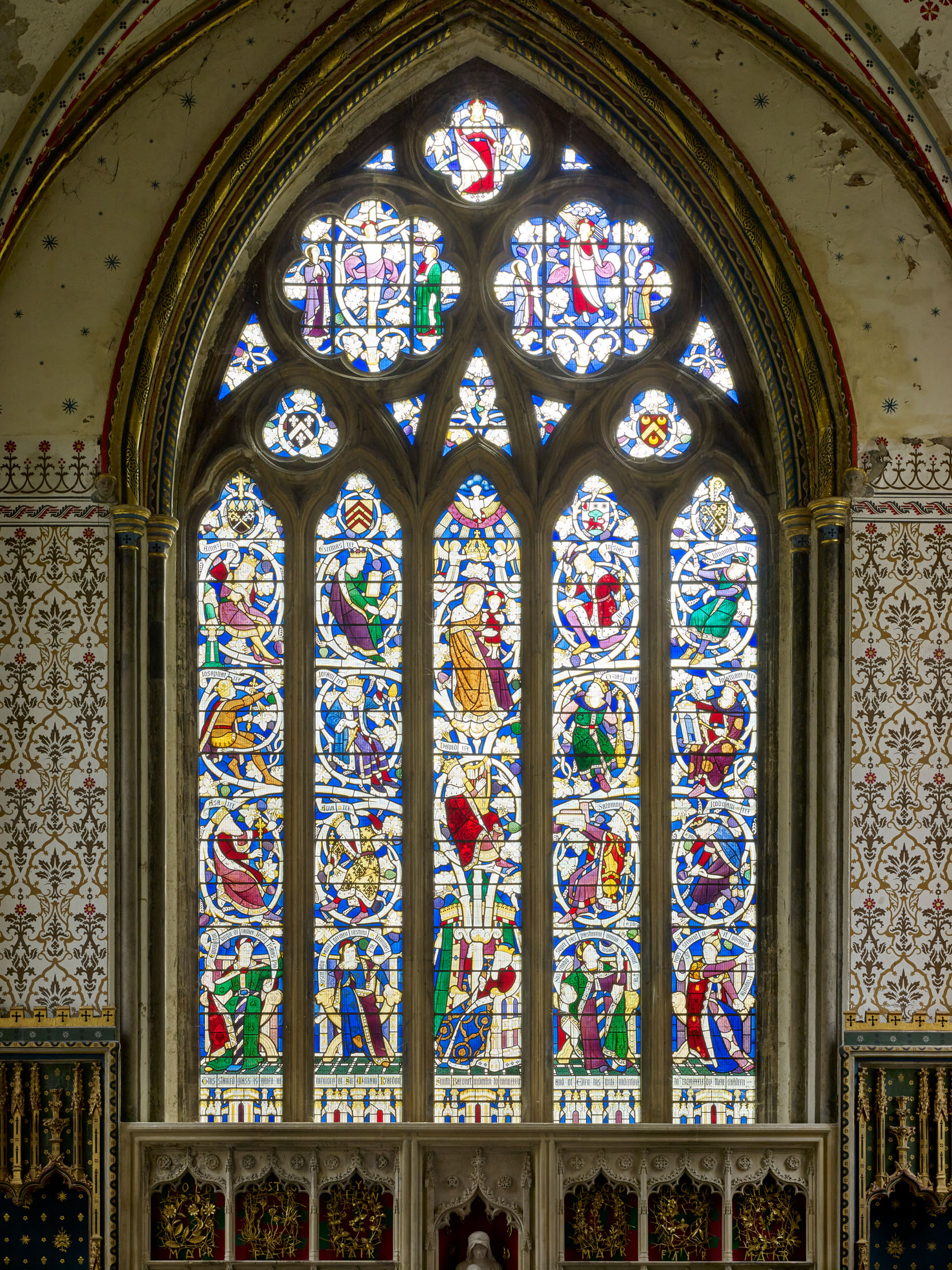
Confronting everyone as they walk through the west doorway of Llandaff Cathedral is an unforgettable — and to the first-time visitor — completely unexpected sight. Dominating the interior without obstructing the main vista is a great parabolic arch in hammered concrete supporting a standing figure of Christ in Majesty. It springs straight through the Gothic order of this monumental interior, clearly distinct from it, yet unifying the space. The combined creation of architect George Pace and sculptor Jacob Epstein, it is only the most celebrated intervention in a restoration project prompted by the devastation of this building by a landmine on January 2, 1941.
As described above, before the 20th century, Llandaff Cathedral had an unusually complex architectural history. The majority of the fabric damaged by the landmine blast was Victorian. That probably explains why the complete restoration of the building was never in question. In this regard, it is intriguing to contrast the treatment of Llandaff with Coventry Cathedral, where the ruins of the medieval church famously became an architectural pendant to its modern successor.
At Llandaff, services were briefly removed from the building altogether, but, by the end of April 1941, the architect then responsible for the fabric, Sir Charles Nicholson, had created an ‘Emergency Cathedral’ in the east arm of the building. This was furnished with salvaged pews and a harmonium, its smashed windows filled with asbestos sheets. A temporary partition that closed off the ruin of the nave creaked and whistled with the wind in bad weather. This was hardly an ideal space, but it served.
For the next decade, little by way of further repair was undertaken. Even after the cessation of hostilities in 1945, the cathedral authorities wrestled with the practicalities of fundraising. Given that there was a distinct source of money strictly associated with the damage inflicted by the landmine (less the costs of ordinary dilapidations), there were additional and byzantine negotiations with the War Damage Commission. When preliminary arrangements were finally complete in the spring of 1949, however, Nicholson unexpectedly died. So, too, did the wartime dean, David Jones.
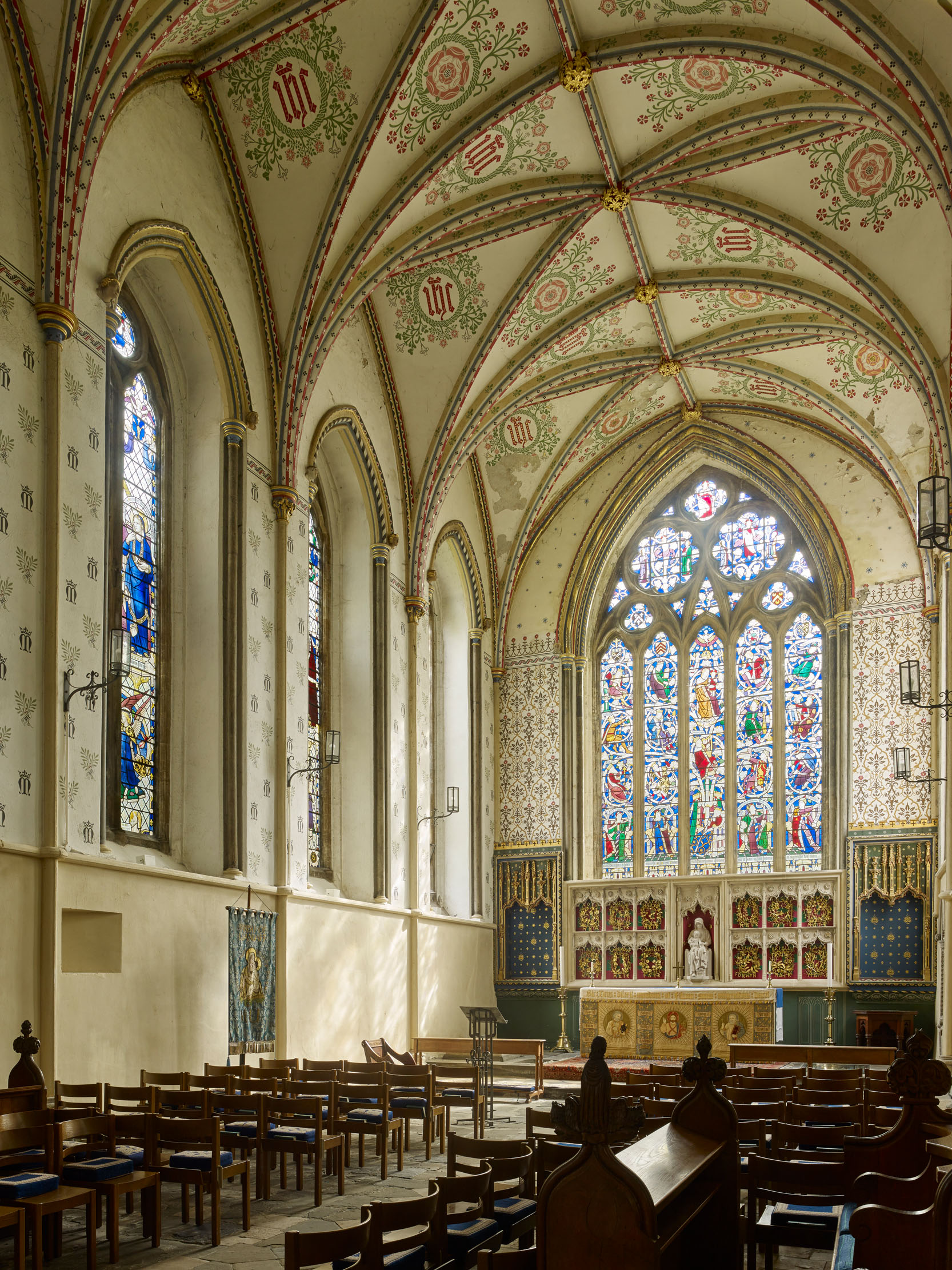
Despite his death, Nicholson’s plans for the cathedral shaped the subsequent restoration campaign in important ways. It was his idea, for example, to erect a flat ceiling over the nave. His proposals were in a Gothic idiom and, in this regard, conform to the mainstream of church repairs in the immediate aftermath of the war. In practice — as, for example, in the burnt-out Roman Catholic Cathedral St George’s Southwark, restored from 1953 by Romilly Craze — this Gothic was usually stripped down to limit expense and take account of post-war material shortages.
In April 1949, the new dean, Glyn Simon, an energetic clergyman of Anglo-Catholic persuasion, appointed two architects to the project. Nicholson’s partner T. J. Rushton was given responsibility for repairs (which were paid for by the War Damage Commission). This work necessarily graduated, however, into a wider restoration project overseen by a young and almost untried architect, Pace (who also simultaneously inherited from Nicholson the role of consultant architect at Lichfield Cathedral). Before his appointment, Pace had never visited Llandaff. Perhaps that helped him see it afresh.
Pace had served during the Second World War with the Royal Engineers in York. That city subsequently became his home and, having resigned his commission in 1949, he set up his architectural practice under the shadow of York Minster in the 15th-century St William’s College. One of his first patrons, who particularly backed him for the Llandaff appointment, was the Dean of York, Eric Milner White, a figure also preoccupied by the repair of medieval churches in the aftermath of bomb damage.
Whereas Nicholson was formed by the Gothic Revival, Pace was a Modernist and an admirer of Le Corbusier. That said, he respected history, relished craftsmanship and took an almost Arts-and-Crafts delight in the qualities of materials. These were deemed unusual, even suspect, sensibilities by some of his professional peers. One driving concern of his church architecture, partly deriving from the Modernist interest in functionalism, was a desire to create and furnish spaces in which the congregation could see and fully partake in the liturgy.

At Llandaff, his first major commission, Pace determined at the outset both to repair all the existing fabric where possible and to make his contemporary additions ‘integrate’ themselves in the design. This approach, he wrote, ‘is truly traditional in a building of great age, upon which many generations… have naturally expressed themselves in the architecture of their own age’. He also wanted the furnishings to be integral to the design and subject to his discipline as architect, so that they could all ‘play their appointed parts in the creation of a Cathedral which is greater than the sum of its parts’. These words might have been uttered by Pugin.
Work immediately got underway on roofing and repairing the nave, as well as the destabilised south-west spire. At the same time, Pace began a memorial chapel to the Welch Regiment, dedicated to St David, on the north side of the cathedral. It was carefully conceived externally not to interfere with the long, low lines of the nave and it joined with other additions to an existing prebendal house in the shadow of the west front, to create what Pace described as a ‘miniature Close’. This complex was later extended by Robert Heaton in 1985–86.
The St David Chapel perfectly articulates Pace’s unorthodox Modernism. The building is orientated north to south, at right angles to the nave, and its walls are constructed with stones from demolished village buildings. Pace drew on local medieval church design for the form of the piers and arches of its single aisle. These were arranged to reveal the interior by stages to the entering visitor. He also tried to instill ‘atmosphere’ by recessing the west windows deeply so that no direct sunlight fell on the altar. The lettering of battle honours by Geoffrey Kaye perfectly compliments this austere interior.
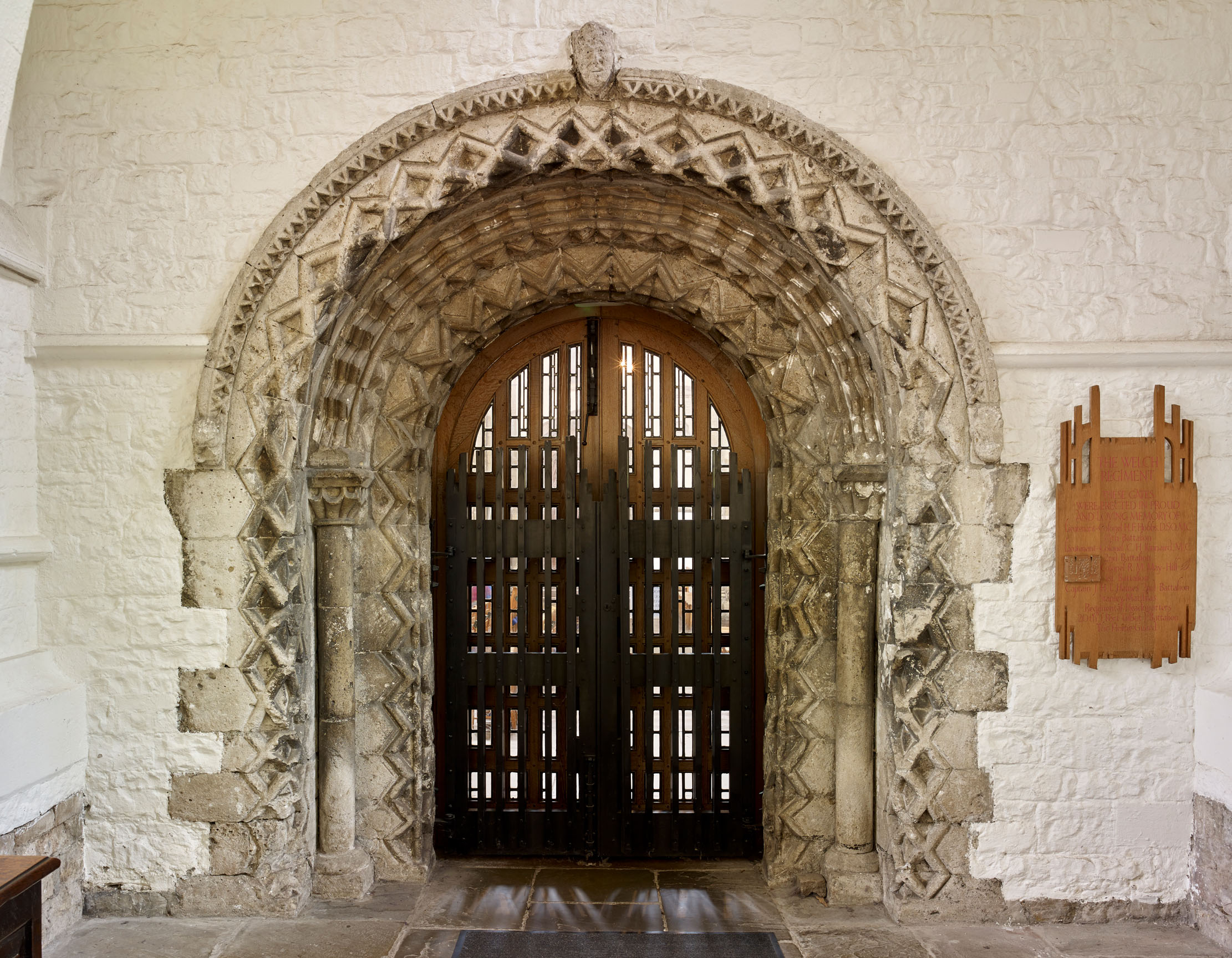
Pace and Dean Simon were further exercised by the problems of furnishing the nave. It had always been the intention that the restored cathedral should accommodate specially commissioned art. In this respect, however, Pace explicitly didn’t want a museum, but a collection of works of art that formed ‘a complete offering to God’. By this he meant that the identity of each contributor to the building should be ‘utterly effaced’ in the whole creation. The work was superbly judged, with a font, carving by Frank Roper and new glass by Geoffrey Webb, John Piper and Patrick Reyntiens. Pace also designed many fittings and vestments.
A particular and recurrent concern that spurred Pace and Dean Simon to think on a grand scale was the idea that Llandaff looked like a parish church. This concept of the building — without a crossing, transepts or vaults — as an insufficient cathedral was commonly expressed from the 19th century and directly inspired the most dramatic element of the work. Perhaps it only seems absurd today because of what this achieves.
In a lecture to the Friends of Llandaff Cathedral in 1950, Pace commented specifically on the loss from the building of the medieval screen — termed the pulpitum — that formerly closed the western end of the choir from the nave. Without it, he lamented, the interior was parochial. What he wanted to do, therefore, was re-create this furnishing. Rather than a division, however, the new pulpitum would frame the axial view down the church and ‘veil’ the altar. As he expressed it, ‘vista should open upon vista; from the moment of entering the Cathedral the journey to the High Altar should be by subtly designed stages’. Pace’s pulpitum was intended to carry an organ case and, instead of a Crucifixion, a more triumphant image of Christ in Majesty.
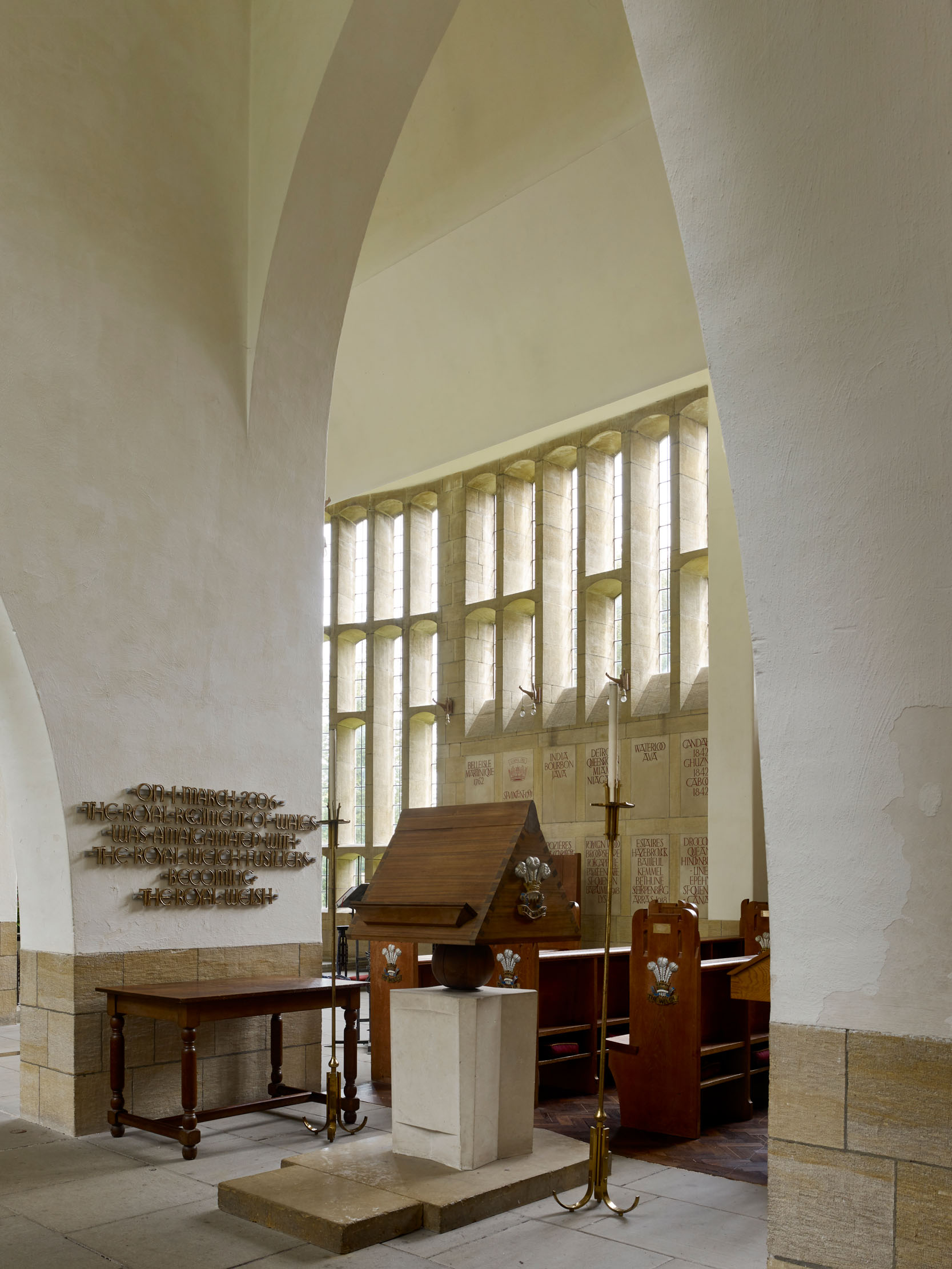
Such was the origin of the great parabolic arch and drum that he subsequently erected across the nave. It was announced in January 1953 that Epstein and Stanley Spencer would respectively create the sculpture of Christ in Majesty on the organ case and paint a Doom in fresco on its underside. The collector Kerrison Preston wrote to the dean: ‘You are brave to withstand the wrath and hostility inevitably aroused by such names… I do hope the risks you are taking will be abundantly justified, and that these two artists, who are capable of outstanding work (but themselves take risks) will be inspired to do their very best for the Cathedral.’
The choices certainly were controversial and the cathedral archive preserves, together with letters of support, angry references to the Second Commandment and accusations that local artists were being overlooked. Epstein, nonetheless, embraced the commission with enthusiasm. He had emerged since the war as a grandee in the artistic establishment with a reputation for religious sculpture. In particular, his Madonna and Child installed in 1952 at the war-damaged Convent of the Holy Child Jesus, Cavendish Square, London W1, enjoyed great critical acclaim. The latter, indeed, closely anticipates his work at Llandaff, hanging above an arch. It also incontrovertibly answered in the affirmative one widespread question of the period: could a Jew interpret a Christian theme?
By December 1954, the full-size plaster figure of Christ was complete and Epstein was keen that it be silvered and shown to the chapter, as well as to Pace, who had determined not to build the arch and organ loft until he had seen the aluminium sculpture. By this time, Dean Simon had been promoted and replaced by Eryl Thomas, another supporter of the scheme. As work to the nave reached completion, Pace mocked-up the pulpitum in situ using plywood. The structure had by now been reduced and Spencer’s Doom was deemed impracticable. He died before he could begin the substitute commission of decorating the Lady Chapel reredos.

From a public relations point of view, the project was shrewdly conceived. The press was refused permission to photograph the sculpture until it was erected and Epstein reputedly agreed with Pace that the full-scale plaster model should be destroyed. In fact, Lady Epstein, the sculptor’s widow, later gave it away and it is now preserved in Riverside Church, New York, in the US.
The final installation of the sculpture took place in 1957. Dean Thomas reminisced that Epstein saw his creation in place on April 9, the day before the restored cathedral re-opened, and was ‘dumbfounded; he stood on the west steps of the Cathedral for two whole minutes in utter silence. When he spoke, he simply said “This commands complete silence”’. To the rear and sides of the organ case, Pace inserted gilded angels from the Victorian furnishings. He also incorporated the remains of the earlier choir stalls in his own set.
With the pulpitum finished, the nave was now brought into use and the restoration efforts were transferred to the Emergency Cathedral. The whole church was re-opened in 1960, with a thanksgiving service in the presence of The Queen. The tradition of commissioning new works of art, however, has persisted, with Roper’s 1965 panels of flowers associated with the Virgin in the medieval reredos of the Lady Chapel and the striking painting Virgin of the Goldfinches by Clive Hicks-Jenkins (2009). More recently, in 2010–13, a new organ (replacing one damaged by a lightning strike in 2007) by Nicholson and Co of Malvern, with 4,870 pipes, has been installed in the choir.

Over the past two decades, the commission of contemporary works of art by British cathedrals has become a commonplace. That partly obscures how radical the restoration of Llandaff was. Even today, few cathedrals have achieved anything approaching the quality and character of the individual interventions of the 1950s. At the root of this success is arguably the sympathy of Pace and those he worked with for the building they inherited. Their achievement is a powerful illustration of the human paradox that the future is inescapably rooted in the past.
Acknowledgements: John Kenyon and David Robinson
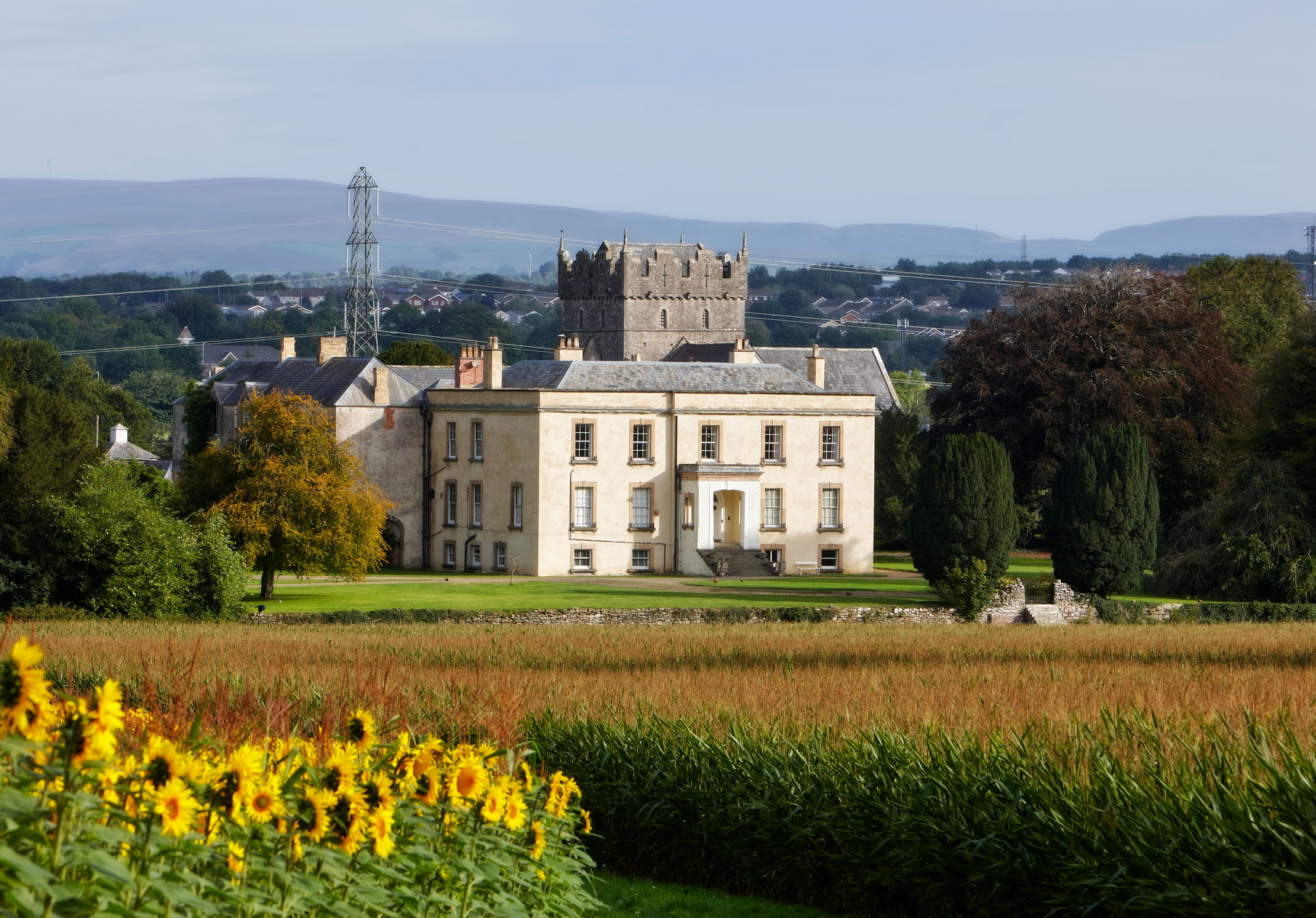
Ewenny Priory: The 900-year-long story of a delightful, complex place full of questions and conundrums
Ewenny Priory is wonderfully atmospheric medieval building in South Wales, encircled by fortifications, which raises a series of puzzling questions

Plas Brondanw: The 17th century home where the man who created Portmeirion cut his teeth
Clough Williams-Ellis is famous as the architect of Portmeirion, the almost-fantastical Welsh village which won lasting fame as the set

Cnicht, Snowdonia: If you only climb one mountain in your life, it should be this one

John spent his childhood in Kenya, Germany, India and Yorkshire before joining Country Life in 2007, via the University of Durham. Known for his irrepressible love of castles and the Frozen soundtrack, and a laugh that lights up the lives of those around him, John also moonlights as a walking encyclopedia and is the author of several books.